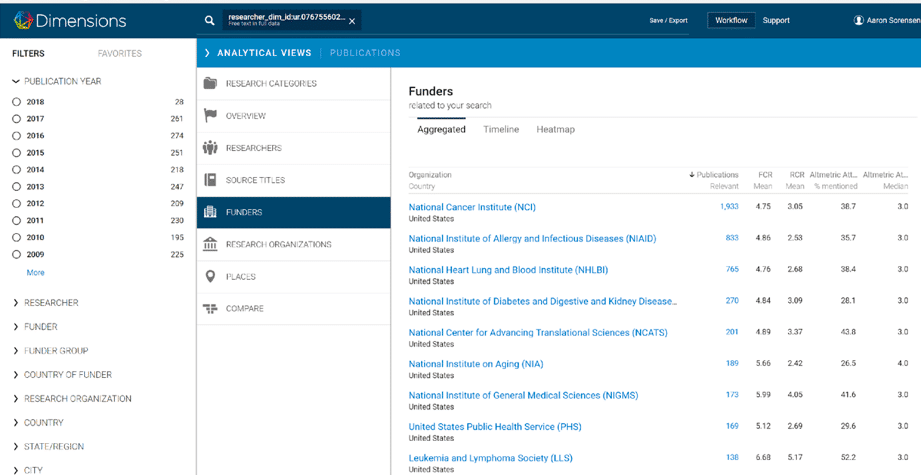(Part 1: The Carl June Generation)
Aaron Sorensen, Director, Data Science Insights Dimensions
People most commonly discover new and interesting fields of science by reading about breakthrough work by leaders in the field. That’s exactly how I learned of the success Carl June was having in the field of immunotherapy, while I was working in clinical research informatics at Temple University School of Medicine a few years ago.
Carl June is the director of translational research for the Abramson Cancer Center at the University of Pennsylvania and is most well known for his research into T-cell therapies for treatment of cancer. With all the excitement around the potential for immunotherapy to help cancer patients and because the person most often associated with this buzz is also located locally in Philadelphia, I wanted to explore the field more in depth using Dimensions.
To locate the bibliometric evidence of June’s thought leadership which has garnered him significant attention in the media, limit the search to articles in the last five years. Then also filter by adding the ANZSRC Field-of-Research code for Immunology along with the NIH Research, Condition, and Disease Category of Cancer. Navigating to the Researchers pane within the Publications Analytical View, shows that Carl June was the fifth most productive author in the recent past.

Productivity only tells part of the story, so to better understand the impact that June is having on the field, it is helpful to gauge the attention his papers are receiving either through traditional citation-based metrics or through online attention measures such as altmetrics.
Using two citation-based metrics, the Field Citation Ratio (FCR) and the Relative Citation Ratio (RCR), June appears either in the top position alone or tied for first. When it comes to the two altmetric-based scores, June separates himself considerably from the rest of the field. The most likely explanation for the boost in altmetric scores relative to citation-based metrics is that those people who are not researchers themselves but whose lives have been affected by blood cancers are expressing their hopes for a cure as June publishes each new result from his lab or his ongoing clinical trials.
The breakthroughs that June and his collaborators create are made possible due to research funding in the form of grants. In an effort to fully understand the field of cancer immunotherapy, you can use Dimensions to “follow the money” over time and view which funders have made this research possible.
To best capture a full picture, find not only those grants where June was a principal investigator but rather all sources of funding acknowledged by all authors on any of June’s papers throughout his career – essentially all the funders who made the careers of all of June’s main collaborators possible.

Through the automatically disambiguated researcher profiles available in Dimensions, we are able to quickly move from the world of publications for the identification of June’s key collaborators, to the world of grants where we discover how these investigators have been funded over their entire careers. In other words, by using the funding component of June’s co-author network, we can get a sense of June’s “funding ecosystem” in its entirety which in turn can be considered a microcosm of the cancer immunotherapy funding ecosystem as a whole.

The integration of both grants and publications into Dimensions researcher profiles offers insights into how effective various funders have been in their investments in the work of June and colleagues. A simple analytical view of June’s grants indicates that NIH’s National Institute of Diabetes and Digestive and Kidney Diseases (NIDDK) have contributed the sixth highest dollar total for grant-based support to June’s collaborative ecosystem.
Navigating to the same analytical view using June’s publications, we see that those 29 grants produced the fourth greatest number of publications. In other words, one can argue that the NIDDK funding approach is allowing it to “punch above its weight” in terms of the number of papers published per dollar of funding.

In just a matter of minutes, Dimensions is able to provide a glimpse into both the past and future of a life-altering field of research. With nearly 95 million publications, over 4 million grants, 35 million patents and 400 thousand clinical trials, it’s simple to explore the research landscape on any subject that interests you. Stay tuned as we continue to explore more generations of immunotherapy through Dimensions data in an upcoming blog.
We encourage you to explore research that’s most interesting to you. And the best part – it’s FREE for personal use! Click here to visit our registration page and begin exploring our data today.
